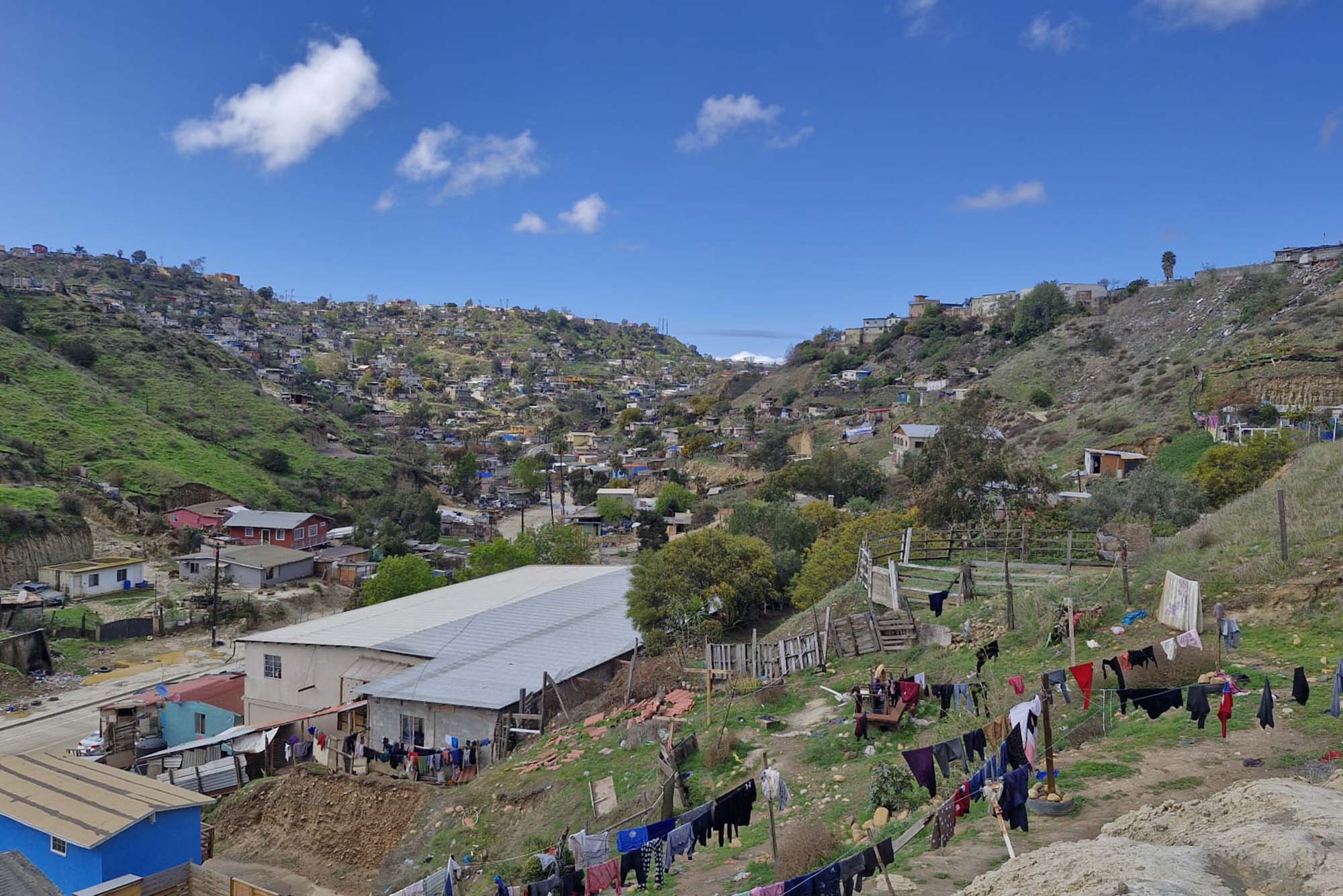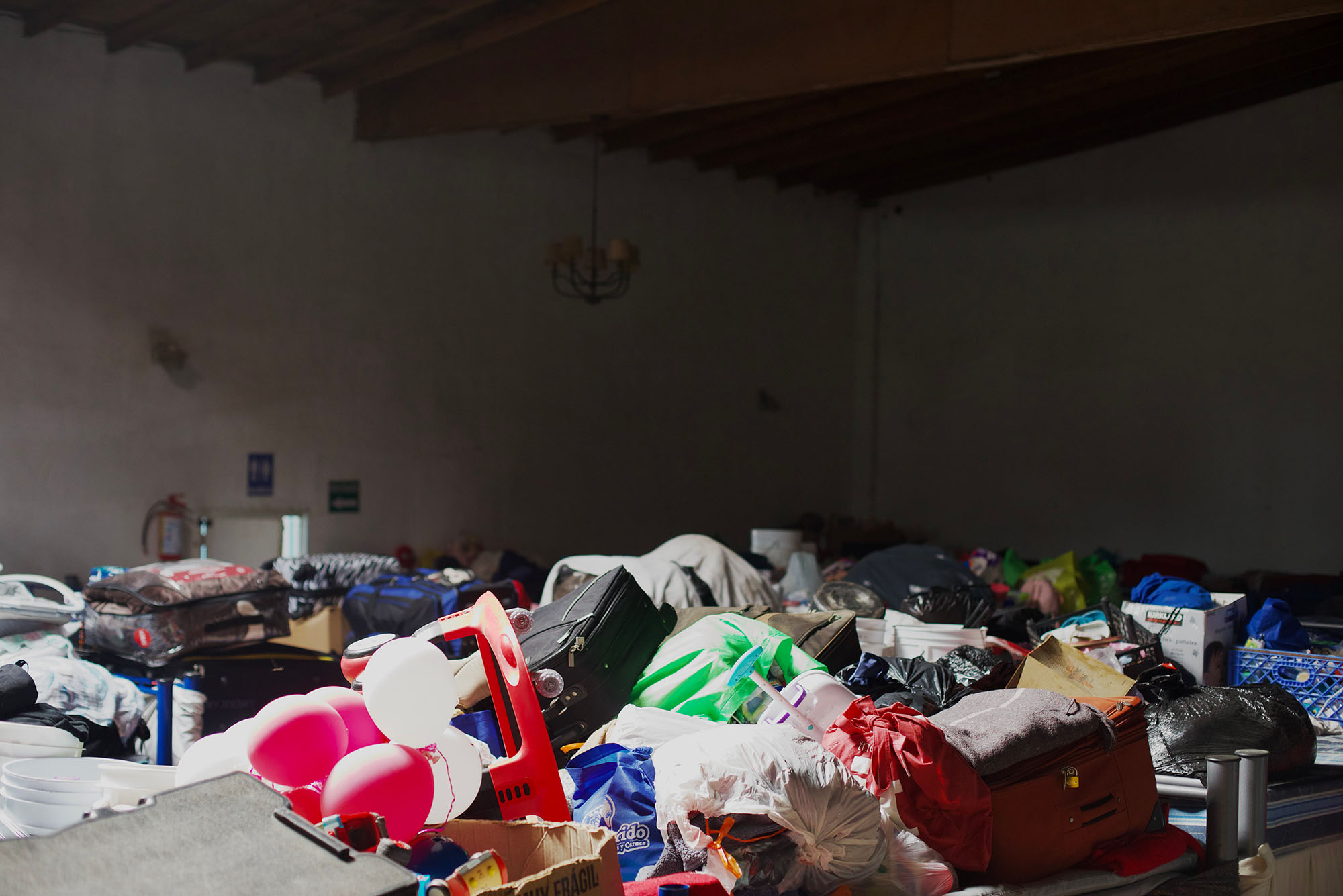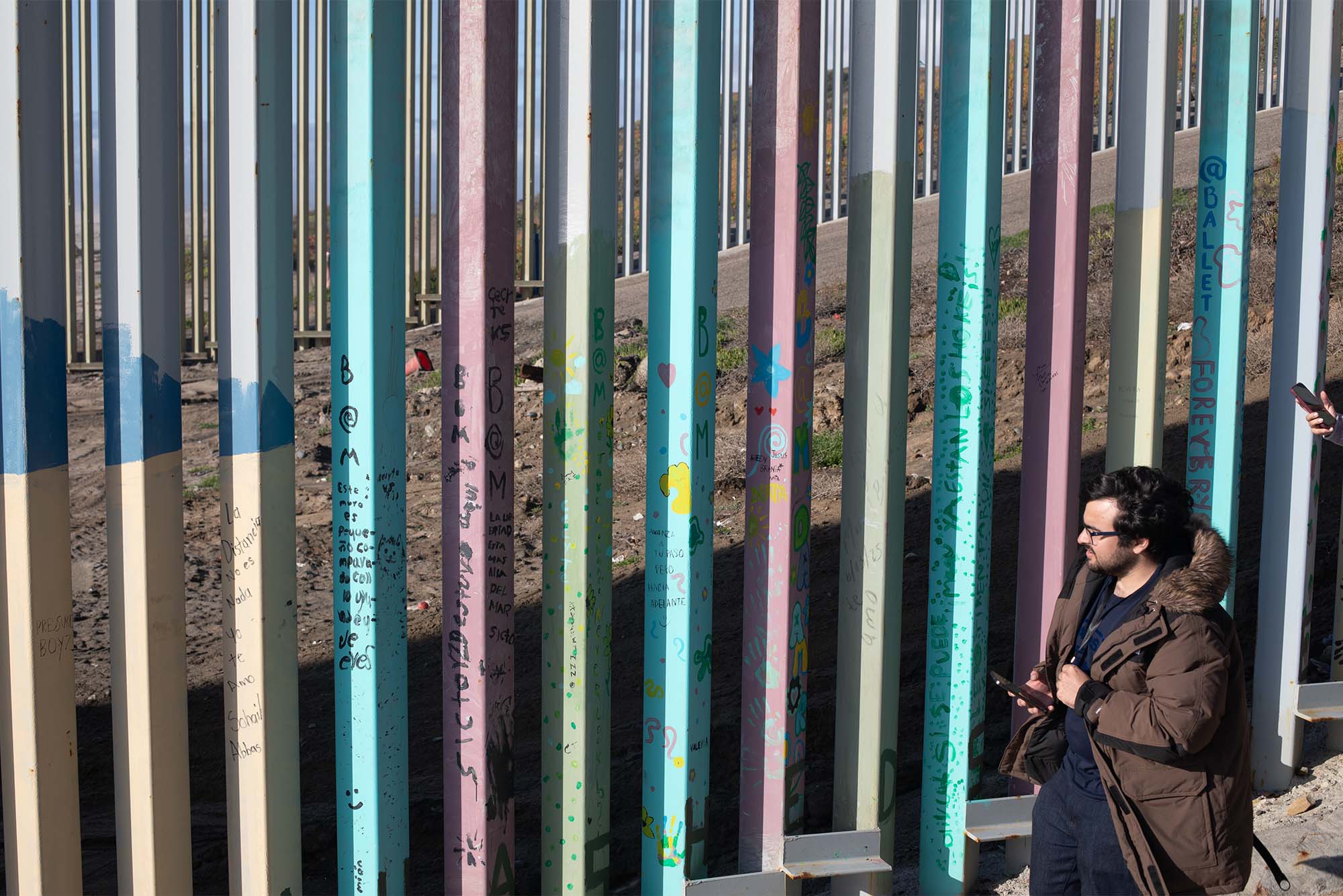BU Journalism and Law Students Confront Immigration Realities in Tijuana
COM’s Shannon Dooling and LAW’s Sarah Sherman-Stokes led a spring break trip to the US-Mexico border to explore the human impact of immigration policies

Little Haiti, located in Tijuana’s Cañon del Alacran, is a community set up by migrants who started new lives in Tijuana after leaving their home country. Photo by Gabriel O’Hara Salini (COM’25)
BU Journalism and Law Students Confront Immigration Realities in Tijuana
COM’s Shannon Dooling and LAW’s Sarah Sherman-Stokes led a spring break trip to the US-Mexico border to explore the human impact of immigration policies
Since taking office in January, President Donald Trump has issued a flurry of executive orders, many pertaining to immigration. Over spring break, two Boston University professors, Shannon Dooling and Sarah Sherman-Stokes, traveled to Tijuana, a Mexican city on the US-Mexico border, with six BU students. The group explored the human impact of these hard-line policies while gaining real-world experience in immigration law and journalism.
Dooling, a College of Communication associate professor of the practice, Sherman-Stokes, a BU School of Law clinical associate professor, and the six students—two journalism and four law students—worked with, and reported on, Al Otro Lado, a binational nonprofit group that provides legal support to refugees, deportees, and migrants in the United States and Tijuana. Given the swiftness of Trump’s immigration directives, Al Otro Lado’s services are in high demand right now, Sherman-Stokes says.
The border “is often a place where people are being treated in inhumane and undignified ways, and where people’s rights are being denied, regardless of who is president,” says Sherman-Stokes, who is also associate director of LAW’s Immigrants’ Rights & Human Trafficking Clinic. “It was a deeply upsetting, very powerful trip. The things that we saw and the stories that we heard, I think will stay with all of us for a very long time.”
The things that we saw and the stories that we heard, I think will stay with all of us for a very long time.
When Dooling got wind of Sherman-Stokes’ planned trip with the law students, she suggested they collaborate. Both had extensive experience in the area: before joining BU in 2022, Dooling reported on immigration for WBUR and traveled to locations like El Salvador and Honduras to learn about how US policies were impacting lives there. Sherman-Stokes has twice brought law students to assist Al Otro Lado with legal services.
The trip was in the works before the US presidential election, Sherman-Stokes says. But regardless of whether the winner was Harris or Trump, she and her team anticipated that injustice would persist at the border and therefore, their legal services would be needed.
Dooling thought her COM students could benefit from the opportunity to report on conditions that would push them out of their comfort zone. “Knowing how impactful that experience can be as a reporter,” she says, “I really wanted to share that with students.” What’s more, “given how much has changed in the landscape of asylum law and immigration policy since the inauguration of President Trump,” she says, she felt it would be a valuable chance for the students to report from the field.
During the week, the BU group and Al Otro Lado members spoke to several migrants who were staying in homeless shelters in Tijuana because their asylum appointments had been canceled after Trump took office and signed an executive order suspending asylum.

The law students worked on tasks that included traveling to different shelters, speaking to migrants, and finding potential plaintiffs for litigation challenging the border closure. Kate Blankinship (LAW’25) says there was no typical day, because the situation is constantly changing.
The journalism students reported on what they saw and their interactions with migrants, and they are currently working on their stories, with plans to pitch them to local publications in the coming weeks.
“We interviewed people from Colombia, Venezuela, other parts of Mexico, and various other countries who had traveled very long distances to get to Tijuana in the hopes of being able to apply for asylum, only to find out once they got here that the rules had changed,” Dooling says.
Field reporting experiences like these help reify policies often only read about in headlines, she says. She emphasizes the emotional weight of the trip and the impact of witnessing countless people who had had hopes of a path across the border but were ultimately left stranded.
“I think being able to take your time and to sit with folks and to hear their story in their own words and to be able to see the impact of policy changes from the White House and how they’re playing out by those people who are affected firsthand,” Dooling says, “is an experience that you really can only get when you’re reporting in the field.”
Sherman-Stokes says that working with Dooling and the journalism students was beneficial to everyone involved, as lawyers can sometimes miss creative perspectives when engaging only with other lawyers and bringing in journalism students offered fresh angles.
Karla Alvarado (LAW’25) says the trip pushed her out of her comfort zone and was a chance to serve a community that is meaningful to her.
“There was something very jarring about seeing a wall that extends out into the ocean, and we’ve decided on one side you are able to apply for asylum and you’re able to seek refuge and find safety, and on the other side, you can’t,” Alvarado says. “I think that’s a reality that I was aware of in theory, but seeing it in practice was jarring.”


She says too that seeing the migrants’ palpable fear of returning to their homeland was difficult, but their courage was striking. “So many of them were so kind and so brave,” she says. “The amount of hope and bravery that they showed in sharing their story was really inspiring.”
Gabriel O’Hara Salini (COM’25), a graduate journalism student from Peru, says he has personal ties to the effects of displacement. A native Spanish speaker, he was able to speak directly with the migrants, and he says hearing their stories firsthand, in their own words, was eye-opening and powerful as well.
“It was a contrast between deep distress and pain, yet also a sense of hope,” he says. “Many still believed that someday the border would reopen, and they would finally have the chance to come to America the right way, as intended.”
Dooling says she was proud of how her students handled difficult, sensitive conversations during the trip. “We wanted to be able to share their stories while also being respectful and responsible about how we do that,” she says. “The students were able to maintain that balance with a lot of professionalism.”
“All the people we saw are whole people with dreams and goals and hopes and wishes for the future, and I think there’s so much in the media where we paint these people as very one-dimensional,” Alvarado says. “They are a lot more than what you see on the nightly news and what you’re hearing from the White House and all these other people in power. These people are just like you and me.”
Comments & Discussion
Boston University moderates comments to facilitate an informed, substantive, civil conversation. Abusive, profane, self-promotional, misleading, incoherent or off-topic comments will be rejected. Moderators are staffed during regular business hours (EST) and can only accept comments written in English. Statistics or facts must include a citation or a link to the citation.